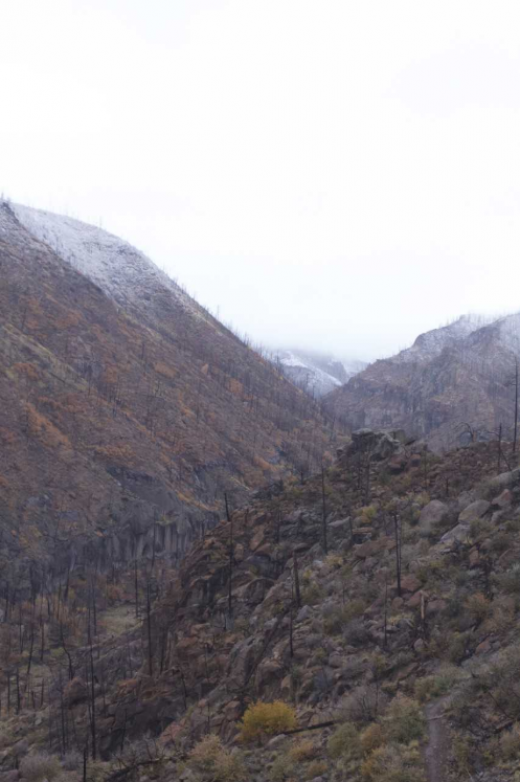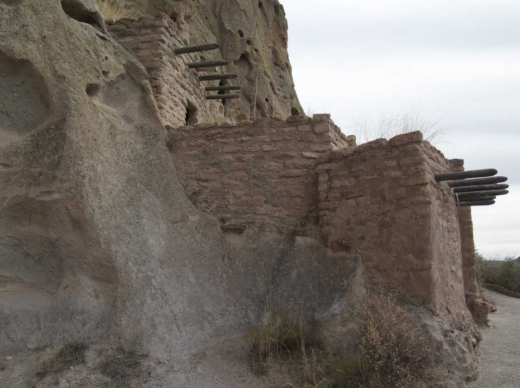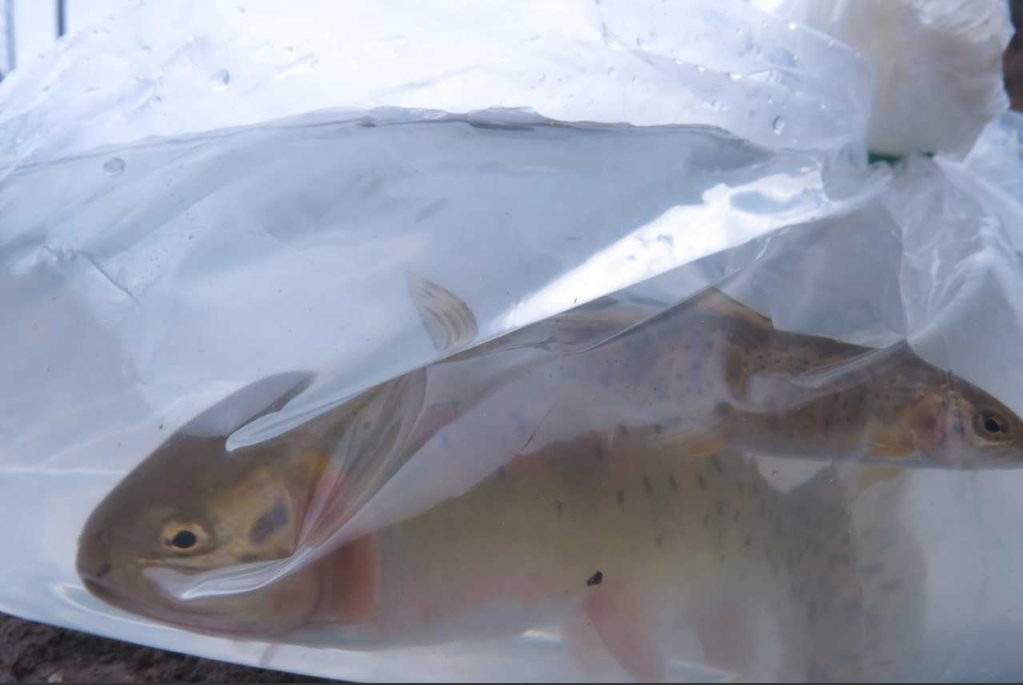By Toner Mitchell
I spent Halloween this year in the company of ghosts. They weren’t the bed-sheet kind, but the long-gone n
ative residents of Frijoles Canyon, in the Bandelier National Monument on New Mexico’s Pajarito Plateau. Established around 1150 AD by ancestral Puebloans fleeing drought and social strife in the Four Corners region, Bandelier is the modern name of the Tyuonyi pueblo, a community of cliff dwellings, built structures, and small farming plots that sustained itself for centuries on the canyon’s water, plants, and wildlife. Perhaps seeking a more stable existence closer to the nearby Rio Grande, the Tyuonyi (pronounced Que-weh-nee) people abandoned the canyon, leaving their deceased ancestors behind.
 For that reason alone, the morning was kind of spooky. Snow dusted the canyon rims, highlighting what I call the Dracula’s-castle effect, where the brightness of snow renders crags and cliffs all the more threatening under such low and dark skies. Eight years before, the canyon slopes were cloaked with ponderosa, pinon, juniper, scrub oak, and a sprinkling of spruce and fir; the Rio Frijoles flowed through cottonwoods, alders and stream willows.
For that reason alone, the morning was kind of spooky. Snow dusted the canyon rims, highlighting what I call the Dracula’s-castle effect, where the brightness of snow renders crags and cliffs all the more threatening under such low and dark skies. Eight years before, the canyon slopes were cloaked with ponderosa, pinon, juniper, scrub oak, and a sprinkling of spruce and fir; the Rio Frijoles flowed through cottonwoods, alders and stream willows.
Snow would have looked more comforting back then, before a tree fell across a powerline in an overstocked forest during a hot summer day on a warming planet. The Las Conchas wildfire consumed 150,000 acres, 40,000 in its first day. It took most of Bandelier, turning Frijoles Canyon into Mars and wiping out its trout.
We were a team of volunteers (Truchas and Bosque TU Chapters), gathered around a Game and Fish hatchery truck as the snow continued to fall. Our mission was to stock the creek with 306 native Rio Grande cutthroat, a process that entailed filling plastic bags with water and trout, loading them into backpacks, and hiking them to the canyon floor for release. New Mexico Game and Fish planned the event perfectly, choosing a late autumn date to ensure low water temperatures, instructing us to find pools where our fish could overwinter in relative comfort. We had waited forever for the stream to heal enough to support fish, and we were finally at the doorstep, like giddy children grabbing for Snickers.
In the Jemez Mountains, (where Bandelier is located) the history and behavior of fire has been studied extensively. Using data collected from burn scars in individual trees from dry mixed conifer stands, scientists have determined that fire occurred frequently, on an approximate interval of every 15 to 30 years. Many of these fires occurred on a landscape scale – trees across areas far larger than the Las Conchas footprint show scars from the exact same fires. Fires burned cool, which we know simply because the trees survived them, often several times over hundreds of years. We know these fires reduced forest fuel loads, regenerated plant growth, and that the Tyuonyi not only survived them, but thrived on the meat and materials their fire-adapted homeland produced.
We also know that natural fire ceased across much of the Southwest with the advent of commercial scale beef production (short grass has difficulty carrying fire and transitions to saplings and dog hair forest in fire’s absence). Add logging and the fire suppression it demanded, a pinch of climate change, and you get the current norm of fuel loaded forests and catastrophic wildfires. The Tyuonyi would definitely not have survived Las Conchas. If the fire itself didn’t take them, the post-fire debris floods would have, and anyone living through those would have starved.

As humans have learned through our fascination with the paranormal, many of our ghosts are benign. Nature, possibly due to the monstrous amount of it that we have relegated to the spirit world, seems proof of this. Though wiping out the cutthroats in the Frijoles, Las Conchas also killed its non-native brookies and rainbows, making a cutthroat-only fishery easier to restore. The years have redecorated the canyon with flowers, grass, baby trees, and millimeter by millimeter of new soil. If not yet ready to forgive the human race, nature seems at least willing to prescribe some Hail Marys.
This occurred to me as I released my fish into a Rio Frijoles pool the size of my kitchen sink. I thought of ghosts, the cutthroats, the trees, the somewhat gentler human cultures before ours, and wondered how many more second chances we’re going to get before we join them. Only nature will tell.
Toner Mitchell is TU’s New Mexico water and habitat coordinator. He lives and works in Santa Fe.



